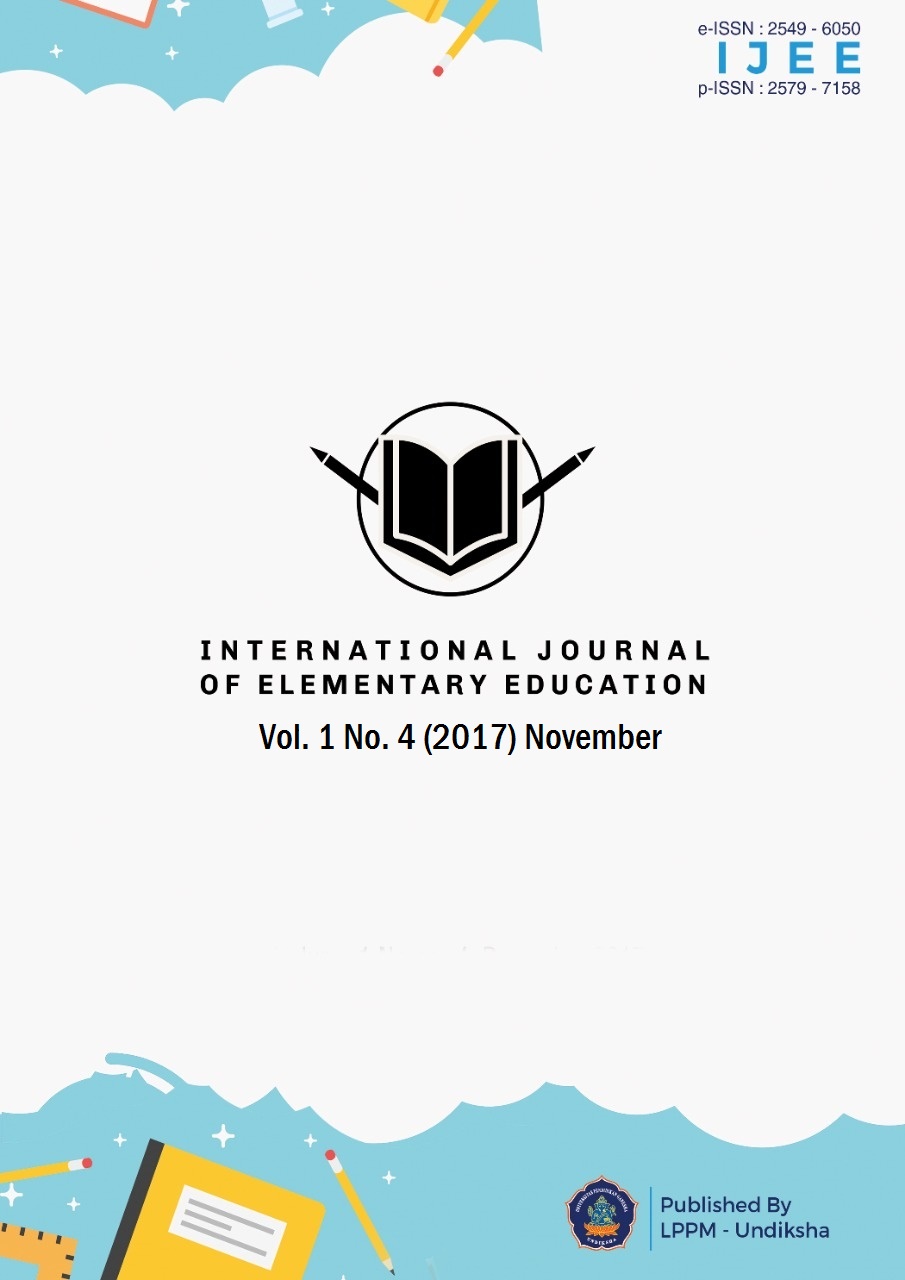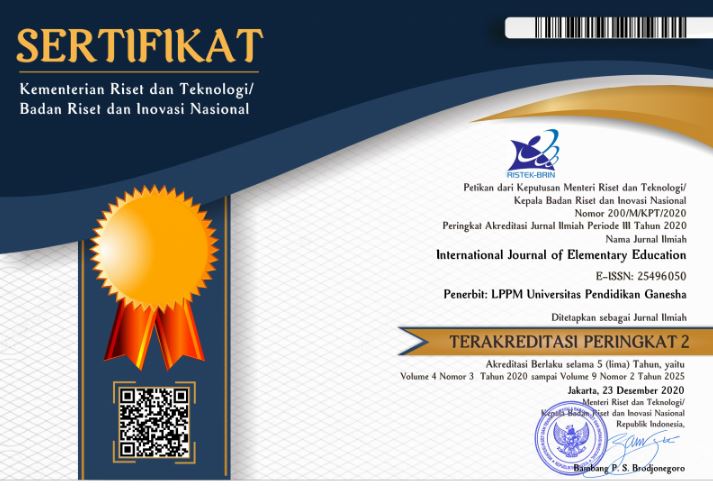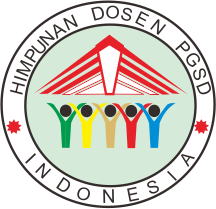AN APPLICATION OF MIND MAPPING TEACHING MODEL TO ENHANCE NATURAL SCIENCE LEARNING ACHIEVEMENT IN THE FIFTH GRADERS IN THE FIRST SEMESTER AT SD N 4 KALIUNTU
DOI:
https://doi.org/10.23887/ijee.v1i4.12965Abstract
This study was aimed at enhancing natural science learning achievement in the fifth graders in the first semester at SD N4 Kaliuntu in the school year 2017/2018. The data for the students’ natural science learning achievement were collected with a test and assessment rubric. The data were analyzed using descriptive statistical analysis, quantitative descriptive method, and gain score (Gn). The result of data analysis showed an increase proven by the pretest score for the students’ science learning achievement of 65.7% , categorized as a low score. The science learning achievement score increased in the first cycle to 71.63%, categorized as average which increased again in the second cycle to 82.34%, showing science learning achievement in the high category. So, there was an increase in learning achievement of 5.93 from pre-cycle to the first cycle, an increase in learning achievement of 10.71 from the first cycle to the second cycle. Thus, it can be concluded that there was an increase in the students’ natural science learning achievement in this study through the implementation of Mind Mapping teaching model.
References
Agung, A. A. G. 2005. Metodologi Penelitian Pendidikan. Singaraja: Fakultas Ilmu Pendidikan Institut Keguruan dan Keilmuan Negeri Singaraja.
BSNP. 2006. Panduan Penyusunan KTSP Jenjang Pendidikan Dasar danMenengah. Jakarta: Depdiknas.
Buzan, T. 2008. Mind Map untuk Anak. Jakarta: Gramedia Pustaka Utama
Darmayoga, dkk. 2013. Pengaruh Implementasi Metode Mind Mapping Terhadap Hasil Belajar IPS Ditinjau Dari Minat Siswa Kelas IV SD Sathya Sai Denpasar. EJurnal Program Pascasarjana Universitas Pendidikan Ganesha Vol 3. , tahun 2013.Edward, C. 2009. Mind Mapping untuk Anak Sehat dan Cerdas. Yogyakarta: Sakti.
Evayanti, A. M. Dwitha, Made Sumantri . 2017. Penerapan Metode Mind Mapping Untuk Meningkatkan Keterampilan Menulis Surat Pribadi Siswa Kelas IIIa. Jurnal Ilmiah Sekolah Dasar Universitas Pendidikan Ganesha. Vol.1 (1) pp. 42-50.
Iswara, P. D. 2012. http://file.upi.edu/browse.php?. diunduh 29 Mei 2017, 08.24.
Novitasari, Ni Kadek, Ni Ketut Suarni, Ni Wayan Rati. 2017. Pengaruh Model Pembelajaran Siklus Belajar 5e Bermuatan Gerakan Literasi Sekolah Terhadap Hasil Belajar IPA. e-Journal PGSD Universitas Pendidikan Ganesha Mimbar PGSD Vol: 5 No: 2.
Pasaribu I. L dan Simandjuntak B. (1983). Metode Belajar dan Kesulitan Belajar. Bandung: Tarsito.
Peraturan Menteri Pendidikan Nasional Nomor 22 Tahun 2006.
Safitri, Dyah . 2016. Penerapan Metode Mind Mapping Untuk Meningkatkan Minat Dan Hasil Belajar Ipa Siswa Kelas V Sd N Balangan 1. Jurnal Pendidikan Guru Sekolah Dasar Universitas Negeri Yogyakarta Edisi 3 Tahun ke-5
Serijana, I Kadek, Nyoman Kusmariyantni, LuhPutuPutrini Mahadewi. 2016. Penerapan Model Mind Mapping Sebagai Upaya Meningkatkan Aktivitas Dan Hasil Belajar Ipa Pada Siswa Kelas V SDN 2 Penarukan, Kecamatan Buleleng, Kabupaten Buleleng Tahun Pelajaran 2015/2016. e-Journal PGSD Universitas Pendidikan Ganesha Jurusan PGSD Vol: 4 No: 1.
Widiana, I Wayan. 2016. Pengembangan Asesmen Proyek Dalam Pembelajaran IPA Di Sekolah Dasar. Jurnal Pendidikan Indonesia Unversitas Pendidikan Ganesha Volume 5 No 2 halaman 823-834.
Downloads
Published
How to Cite
Issue
Section
License
Authors who publish with the International Journal of Elementary Education agree to the following terms:
- Authors retain copyright and grant the journal the right of first publication with the work simultaneously licensed under a Creative Commons Attribution License (CC BY-SA 4.0) that allows others to share the work with an acknowledgment of the work's authorship and initial publication in this journal.
- Authors are able to enter into separate, additional contractual arrangements for the non-exclusive distribution of the journal's published version of the work (e.g., post it to an institutional repository or publish it in a book), with an acknowledgment of its initial publication in this journal.
- Authors are permitted and encouraged to post their work online (e.g., in institutional repositories or on their website) prior to and during the submission process, as it can lead to productive exchanges, as well as earlier and greater citation of published work. (See The Effect of Open Access)









